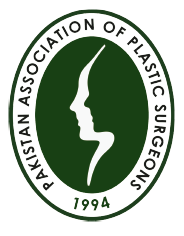
Hair transplant is a surgery which relocates the permanent hair to
the bald/thinning areas. After the relocation of the grafts, the hair will keep growing. It will have the same characteristics as the hair from the donor site- size, quality, growth speed and the same lifespan. There are two types of hair transplant depending on the method of harvesting:
1)F.U.E
2)F.U.T
Planning
A detailed family history is useful in assessing hair loss and planning a new
hairline. The colour, quality, and density of the donor hair, as well as the contrast between the hair and the skin colours, are important factors that affect the result. The lesser the contrast between the donor hair and the skin, the better is the result. It is also noted that frizzy, curly, or wavy hair are advantageous characteristics in transplanted hair. The planning of the hairline is one of the most important steps in hair transplantation.
Preoperative preparation
The patient is asked to shampoo his head with Betadine surgical scrub on the
day before, and on the morning of the surgery.
Preparation of the donor area
Local anaesthesia is used for the entire procedure. The hair in the donor area
(occipital region) is trimmed to a length of 2–4 mm and the local anaesthetic
solution is injected just below the donor area.
FUT
The donor strip can be harvested with a single-bladed knife After the strip has
been harvested, the gap can be closed either with staples or sutures.
FUE
Follicular Unit Extraction is a technique that involves the removal of the intact follicular unit directly from the donor area using a 1 mm punch. The yield by this harvesting technique can decrease due to transection and avulsion injury to the follicular unit. Also, although marketed as a technique that leaves no scar in the donor area, it leaves multiple ‘dot-scars’ in the donor area, which are larger than those left by the strip method.
Graft preparation
The harvested donor strips are immediately immersed in chilled normal saline. This is achieved by keeping the tray containing the grafts, immersed in saline on ice. Proper hydration of the donor grafts with cold saline is very important throughout the surgery as it influences the survival rate of the grafts.
Preparation of the recipient area
Anaesthesia for the recipient area includes a supratrochlear and supraorbital
nerve block, followed by a ring block in the frontal area beyond the zone of hair transplantation. While making slits or holes in the recipient area, it is very important to follow the direction of the existing hair in that region. The hairline should have a ragged, saw-toothed natural look.
Graft insertion
The grafts are placed into the recipient slits / holes using fine-angled forceps. It is important to employ an atraumatic technique for graft placement
Postoperative care
The patient is discharged the same day. Dressing to be removed next day .
Some swelling is obvious after a hair transplantation surgery.
Eyebrow transplantation can be done to improve or recreate eyebrows. It is an aesthetic essentiality to follow the direction of the eyebrow hairs while creating a new line. Around 150 micrografts are usually required for an eyebrow of one side. The donor site for eyebrow transplantation should be of finer hair preferably from the nape of the neck or the temporal region. Recipient holes are made with a No. 20 or 21-gauge needle or a 0.7 mm microblade. Cyanoacrylate glue may be used over the grafted areas to keep the grafts in place during the immediate postoperative period.
Grafting eyelashes is a more challenging procedure. Fortunately, only a few
lashes are necessary to produce a good result. Six one-hair micrografts per lid
may satisfy most patients. Cyanoacrylate glue is again very useful in keeping
the grafts in place.
Moustache reconstruction by hair transplantation is especially useful in patients who have had a cleft lip or a scar following trauma. The hair in the moustache area is much more wiry and coarser than hair in the scalp. Harvesting hair from the beard area just inferior to the jaw line may provide better donor hair for moustache reconstruction.
Patients have a variety of personal desires regarding how they want their facial hair to appear. For many men. restoration of a full beard is a common request, whereas other men want just a “strap” beard, a narrow band of beard that runs along the jawline. Growth of scalp hairs when placed into the beard is exactly what beard hairs should do, so this is not the potential issue it can be with eyebrow transplants. When performed properly, the number one goal can be achieved: the hairs grow out in a natural direction, angle, and pattern, and once shaved off, the facial skin looks normal and is free of scarring and other obvious signs.


